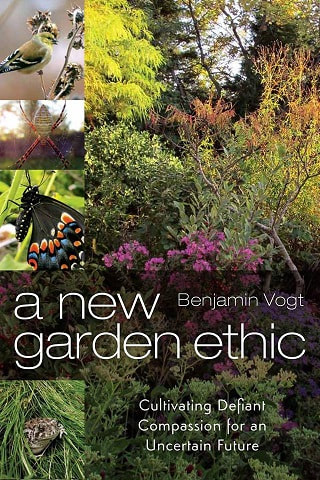Heuchera richardsonii -- large, maple-like basal foliage leaves, with tall, erect, vertical bloom stalks in mid to later April. These plants could easy be massed in formal squares or triangle, or in rows. The blooms and stalks show better in a thicker planting, however, while the foliage is a nice contrast to the thinner leaves of sedge and grass species.
Baptisia australis minor -- This is going to be a bit hit or miss because I think it's based on ecotype, but about half of my specimens -- after 5 years or so -- develop a nice mounded, rounded shape that's roughly 18x18 inches or even 24x24 inches. The smooth, oval leaves contrast nicely with a matrix of short bunchgrasses, while the springtime bloom stalks reach about 6-12" above the foliage. As the foliage continues to grow they overtake and help round out the jet-black seed pods from those once-taller bloom stalks.
Echinacea pallida -- More open an airy than Echinacea purpurea (mainly due to thinner stems and more basal-type foliage), the flower stems stay pretty stout and erect at 2-3 feet tall while being jet black in winter. This species provides a nice vertical, sculptural accent.
Liatris aspera or Liatris ligulistylis -- Similar aspects to EP above, vertical stems don't take up much visual space and could be arranged in such a way to create an short allee of herbaceous perennials above shorter species of other plants.
Allium cernuum -- Nodding onion gets about 12x12 inches oar even up to about 18" tall. While the overall shape is not as rounded former as something like Allium 'Millenium' which also has more blooms in a tighter presentation, this straight species can be arranged in geometric patterns or recurring masses to help the eye move across a semi wild or more formal / geometric pattern.
Symphyotrichum oblongifolium 'October Skies' -- Let's call it a large, oval to rounded mass of green until mid to late fall when it's covered in tons of flowers. Mine get about 2-3' wide and 18-24" tall after a few years, and a great at mimicking overused spreader conifers or meatball boxwoods.
Symphyotrichum novae-angliae 'Purple Dome' -- Suggesting this one with the caveat that it's legs, by mid summer, get covered with sedge or shortgrass species since this cultivar is prone to legginess where bottom leaves on stalks die (which very well might be due to chrysanthemum lacebugs more than anything). Place it among some Bouteloua curtipendula or B. gracilis and you're good to go.
If you need something taller and thicker with more stalks and gravitas, maybe look to Eutrochium purpureum. If you're looking for tall and architectural with stems that withstand strong wind, maybe something like a plantain, either Arnoglossum atriplicifolium or A. plantgineum. The former gets nice maroon stalks.





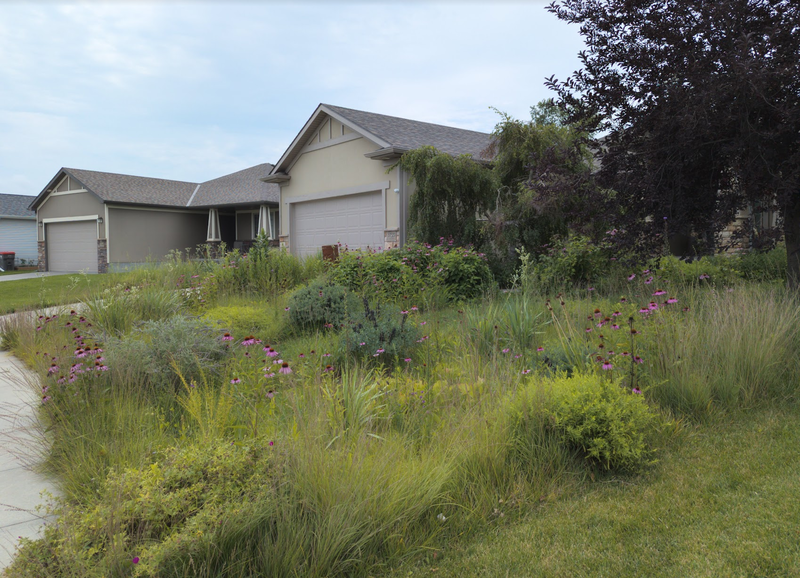
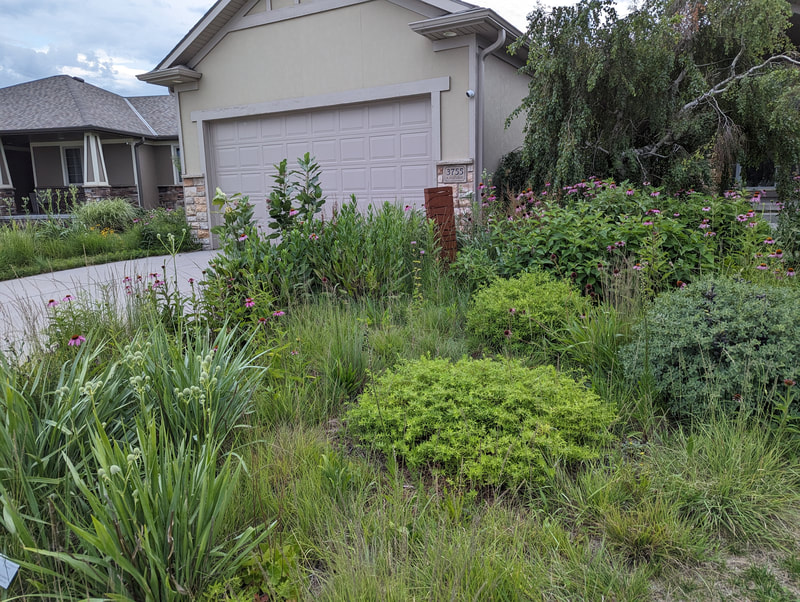



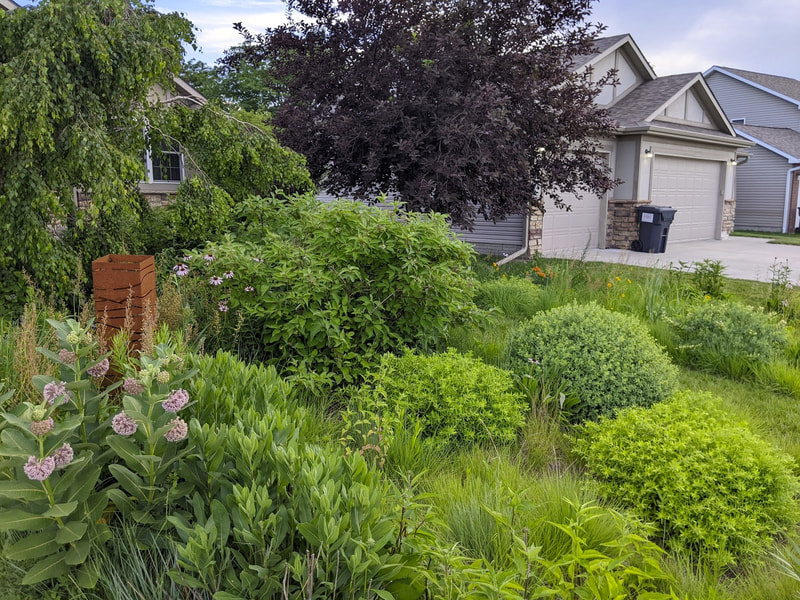
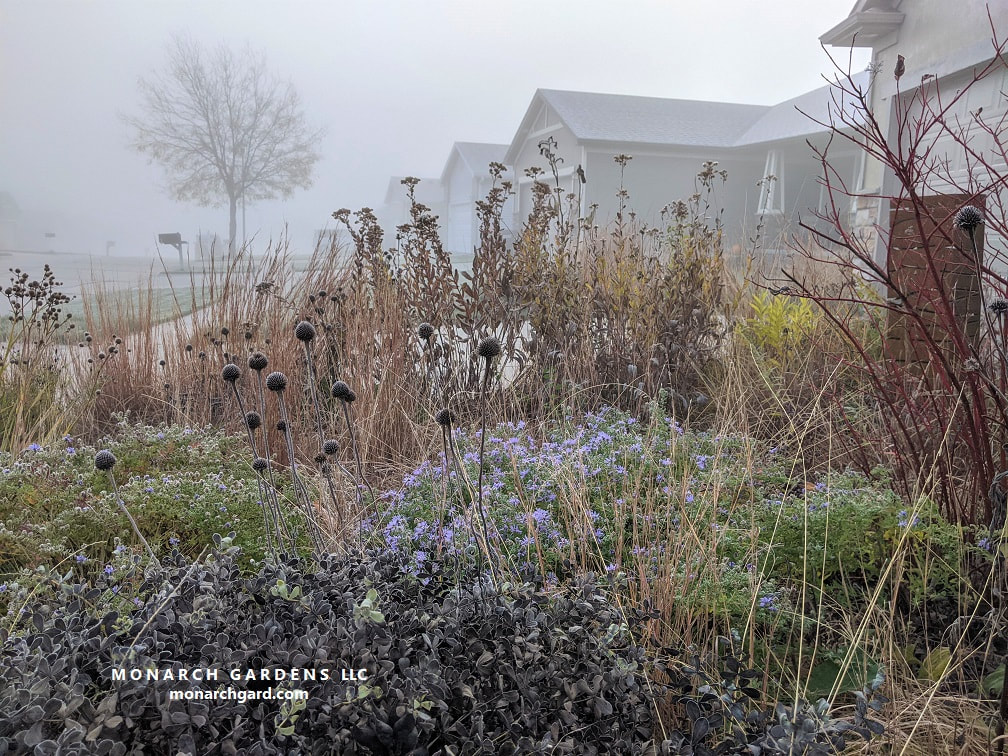





 RSS Feed
RSS Feed
